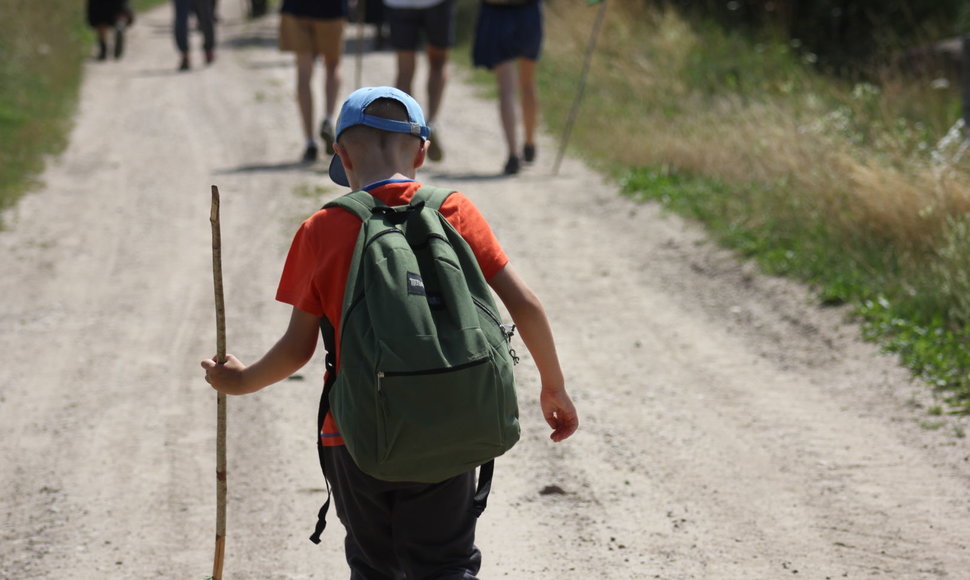Lithuanians are ambassadors of the pilgrimage
The most famous pilgrimage route in Europe is the Camino de Santiago (the road to Santiago), also known as the Way of St. James, which is included in the UNESCO World Heritage List. From now on a section of the Camino de Santiago will also be located in Lithuania.
According to Marius Minkevičius, the organiser of the Project “Camino Lituano”, this pilgrimage route will open up new opportunities to discover unseen Lithuania.
“For some, the hike is changing the way of life, while others gain a new attitude towards the environment. The equivalents of the Camino de Santiago are increasingly emerging all over the world. In Lithuania, we also want to create one section leading to Spain”, says Marius Minkevičius, who is one of the volunteer creators of the path.
Today, the pedestrian path that connects the most beautiful places in Lithuania is almost finished, but those who wish to join the project can still help to plan, mark or maintain its last sections.
“There are many ways of contributing to the idea, for example, becoming an ambassador of a certain location, which includes spreading the message about it, offering unique sightseeing objects or even hostels for travellers. A Brazilian lady is currently hiking on the road; the route has already been tested by Spanish, Korean, German, English, Dutch travellers, and even a guest from South Africa. It is, therefore, a perfect chance to represent and unveil Lithuania,” says Mr Minkevičius inviting volunteers to join the project.
According to him, both young families, grannies in farmsteads and rural tourism homesteads show hospitality and provide overnight stay for the pilgrims. Currently, there are still hostels missing in the section between Raudondvaris and Panevėžys, as well as near Prienai.
Presentation of the exclusivity of the country
The Camino Lituano is intended for individual hiking; it is easy to follow thanks to the globally recognisable marking: the road symbol of a shell and bright yellow arrows.
Besides, there are also hikes in Lithuania that are led by guides. Aurimas Rapalis is one of them; he started organising treks almost intuitively - feeling a civic duty, and is fostering the history of Salantai region and the whole of Lithuania ever since.
“More than a decade ago, being a graduate, I was just walking with a friend of mine around the Salantai area and accidentally bumped into the partisan burial place. Back home, I looked for information about that place and found out that approximately 30-40 forest brothers were buried there. I was touched and upset. I had many internal questions: why didn’t anyone take me there while I was still at school, and tell me anything about this place? Later, on the All Saints’ Day, I used to go there every year to light up candles. When I realised that only a few people were visiting that place, I started hiking in partisan paths,” shared his experience, Mr Rapalis.
At first, he started organising trips to friends. Later his fields of interest have expanded to the history of the country, the history of post-war freedom fights, and the memorials of the ancient Curonian tribe. Curious people from all over Lithuania, who love their country, join his educational hikes.
“In our hikes, we want to spread the message about the country’s uniqueness, to introduce young people with attractive means of spreading live history. This is mostly reflected in the traditional hike “On the paths of the partisans of the Sword Troup” from Salantai to Grūšlaukė, which has already taken place eight times. Although the distance of the hike is not so long - about 25 km, swamp forests and often rainy weather do not only turn into a fitness test, but also evoke empathy for those who spent much more time in this forest”, summarises the hiker.
Have you met a public-spirited young person while you were hiking? Nominate him or her for the National Civic Youth Award “Our Fatherland” on our website www.tevynemusu.lt.












